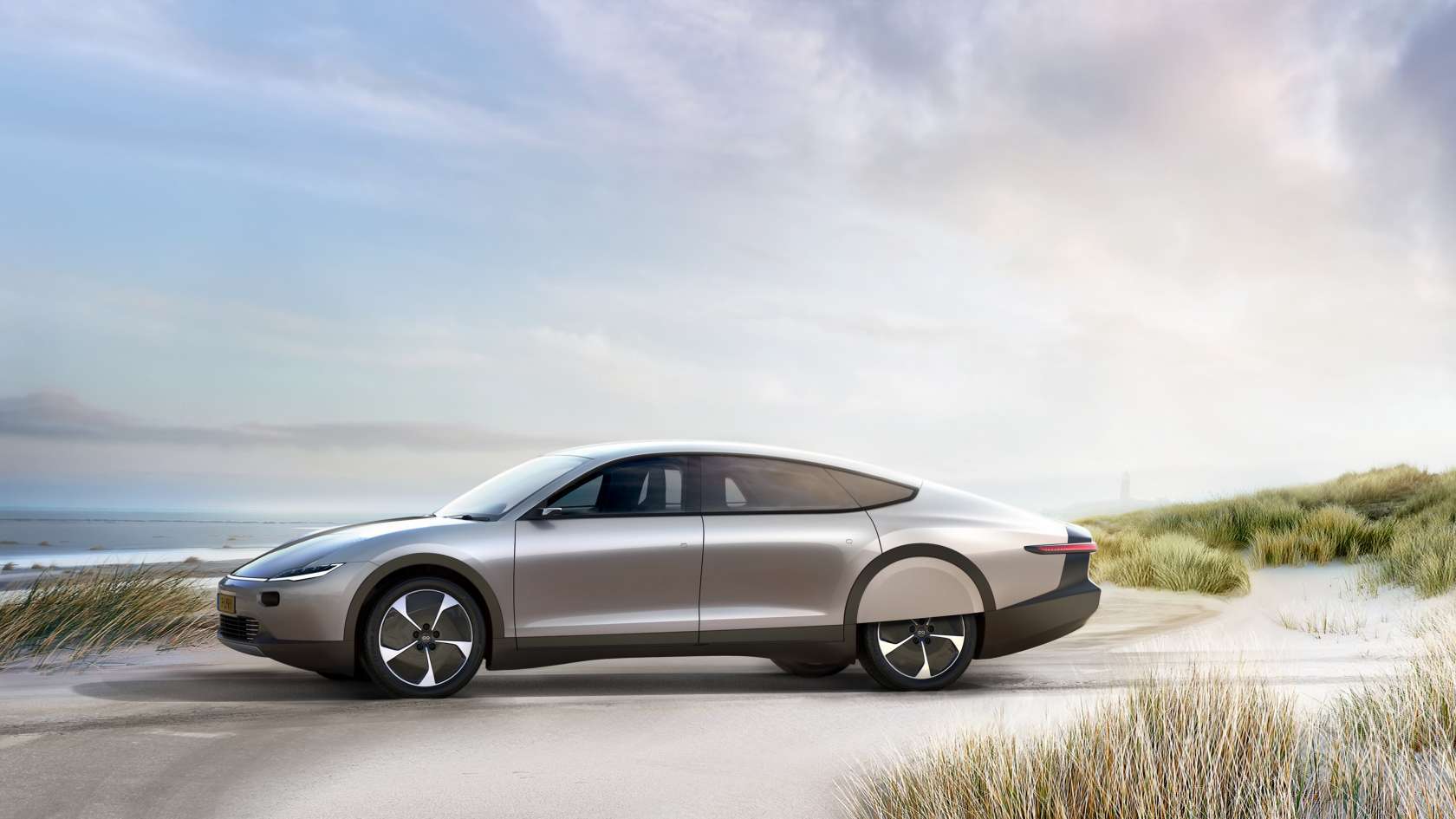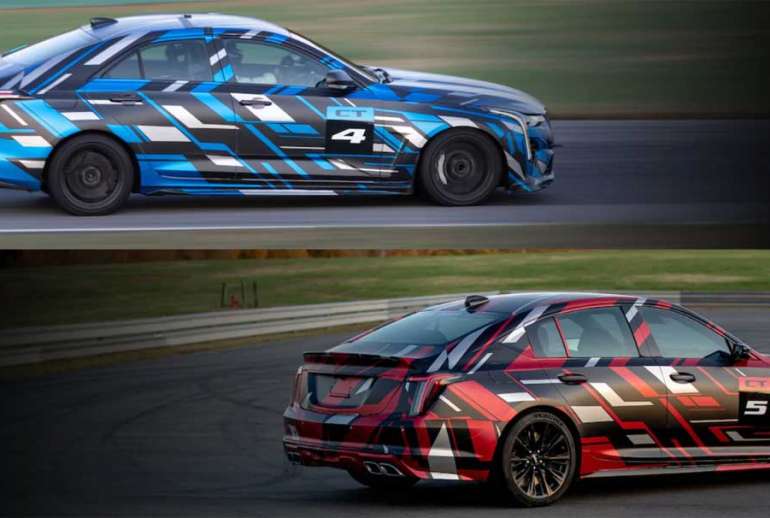The Netherlands is known for many things, be it windmills, tulip fields, bizarre-looking wooden shoes, and bicycles. But with the new Lightyear One EV, the Dutch are also leading the way in solar-powered electric vehicles.
The Lightyear One is not a concept
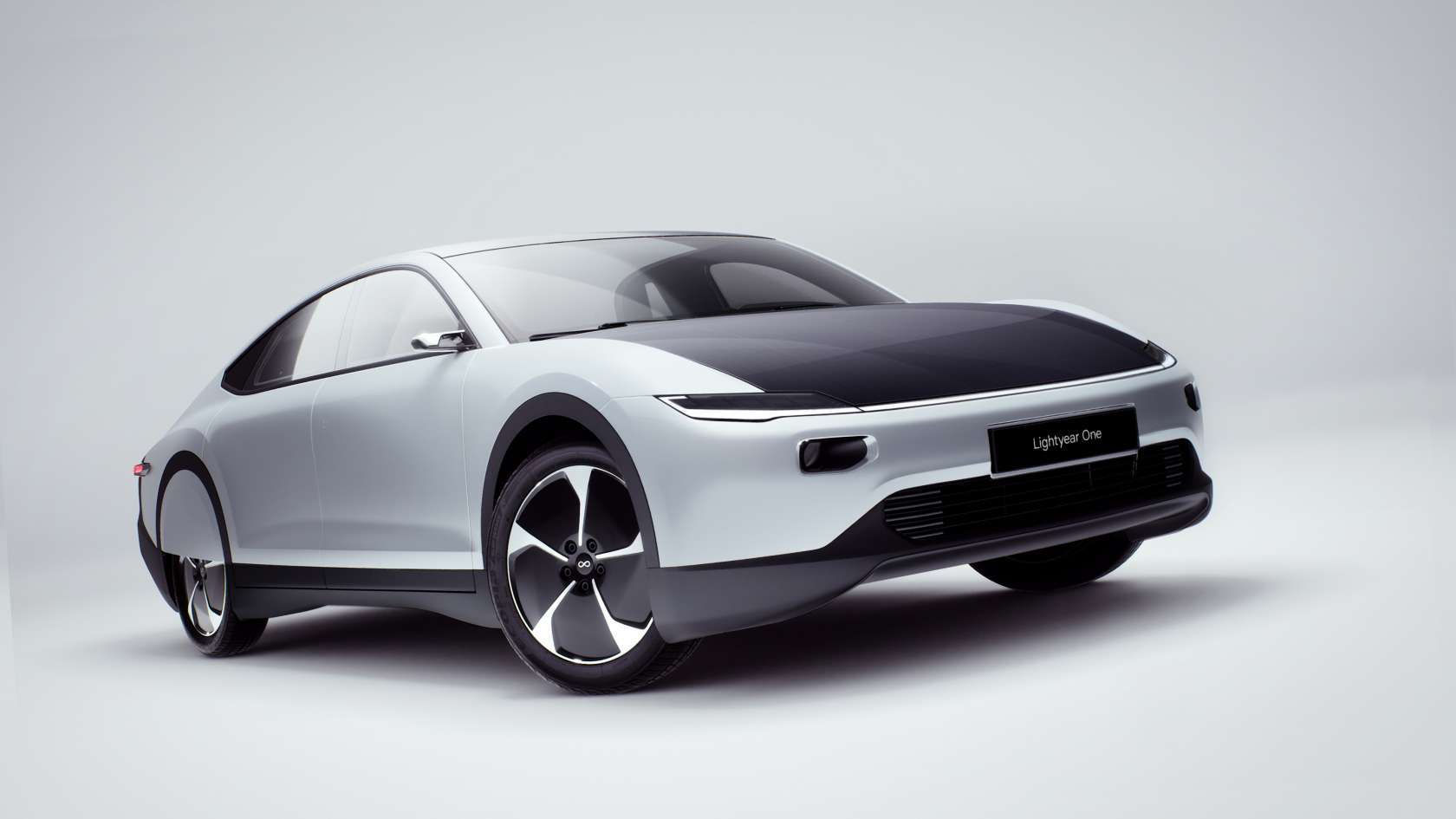
Sure, it started out as a concept like all cars. But the Lightyear One you’re seeing now is a real car, albeit in prototype form. The car was presented to the public at the TheaterHangar in Katwijk, the Netherlands.
In fact, you can reserve a unit in Lightyear’s website. And while the first 100 units are already called for, the company says they’re open to taking more reservations. First deliveries of the Lightyear One are expected to start in early 2021.
How much? The Lightyear One starts at $170,000.
It’s a long-range solar electric car

According to the company, Lightyear One is the world’s first long-range solar electric car. It still comes with a battery pack, although Lightyear didn’t say how big or how much. What we know is the car generates electricity using solar power. The sun’s energy is harvested using the wide streak of solar panels above the vehicle.
“This moment represents a new era of driving,” said Lex Hoefsloot, CEO and co-founder of Lightyear. “Two years of dreaming, thinking and working hard have led to this milestone, which is a giant leap towards achieving our mission of making clean mobility available to everyone.”
Viewed from the top, the Lightyear One is festooned with solar panels, and we mean the entire hood, roof, rear glass, and trunk, for a total surface area of five square meters.
Yes, those blacked-out panels on top of the vehicle are all solar panels.
The solar panels are intelligent, too
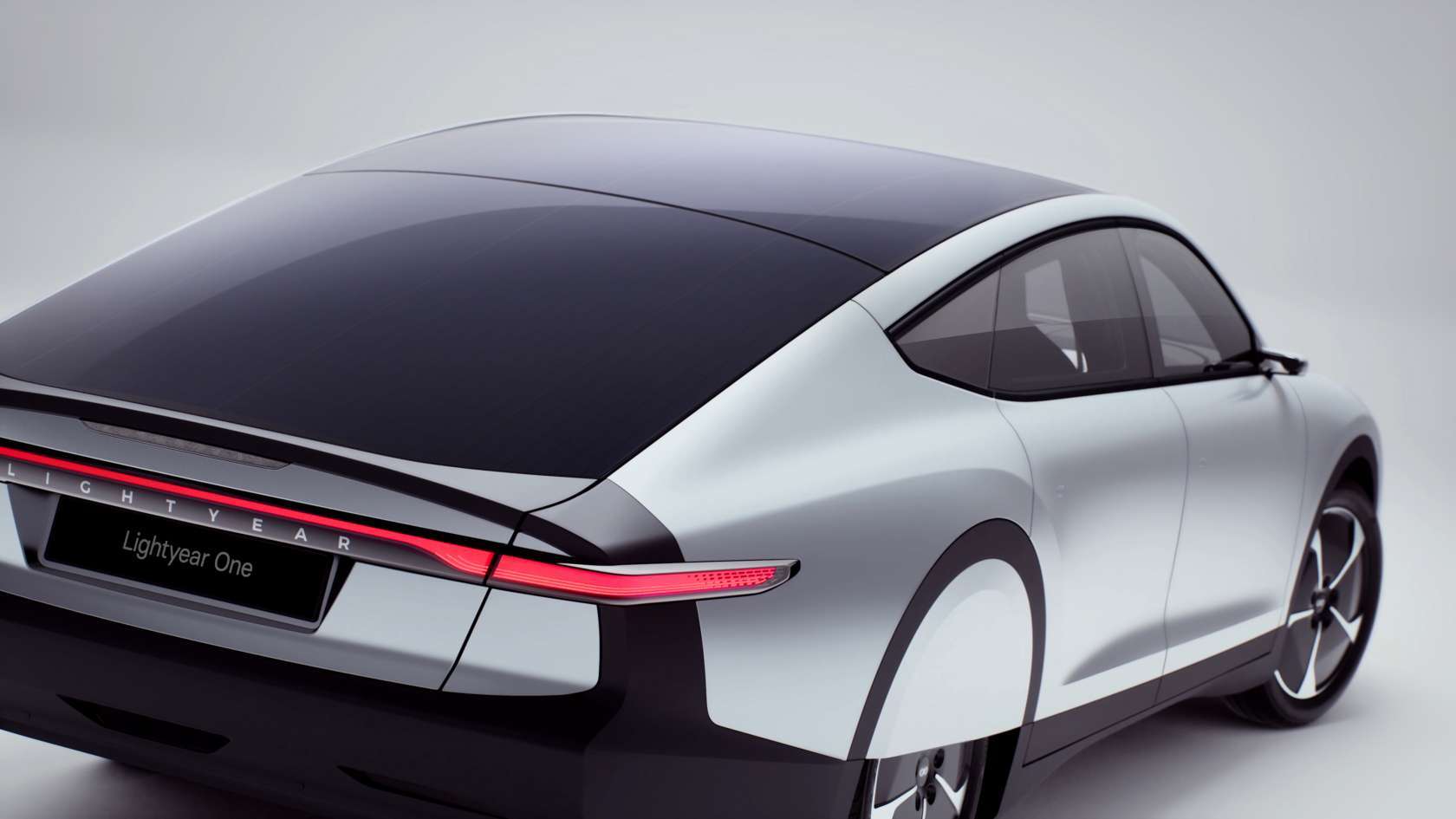
Conventional solar panels haven’t changed much since the 1980s. However, the solar panels in Lightyear One are engineered to harvest up to 20-percent more energy than traditional panels. The company says the solar panels can charge the vehicle at a rate of 7.4-miles per hour or 12 km per hour.
And unlike those old-school solar panels, the cells in Lightyear One are independent. They are designed to continue harvesting solar energy even if part of the roof or hood is in shadow. This means a greater chance of gathering the necessary energy to produce electrons for the electric motors.
The vehicle also comes with a conventional level 2 (22 kW) and level 3 (up to 60 kW) DC fast charger.
The Lightyear One achieves exceptional range

This is where the Lightyear One separates itself from ordinary electric vehicles. Since the car is able to absorb power from the sun, the result is exceptional range even with a smaller battery pack.
Based on the WLTP cycle, the Lightyear One achieves a guaranteed range of 450-miles (725 km). Lightyear says you’ll get approximately 248-miles of range (400 km) in winter and at highway speeds with the heater turned on.
However, the company also says the average driving range is between 310-miles (500 km) and 497-miles (800 km).
If this turns out to be true, then we’re looking at the future of ultra-long range zero-emission vehicles.
It has four electric motors
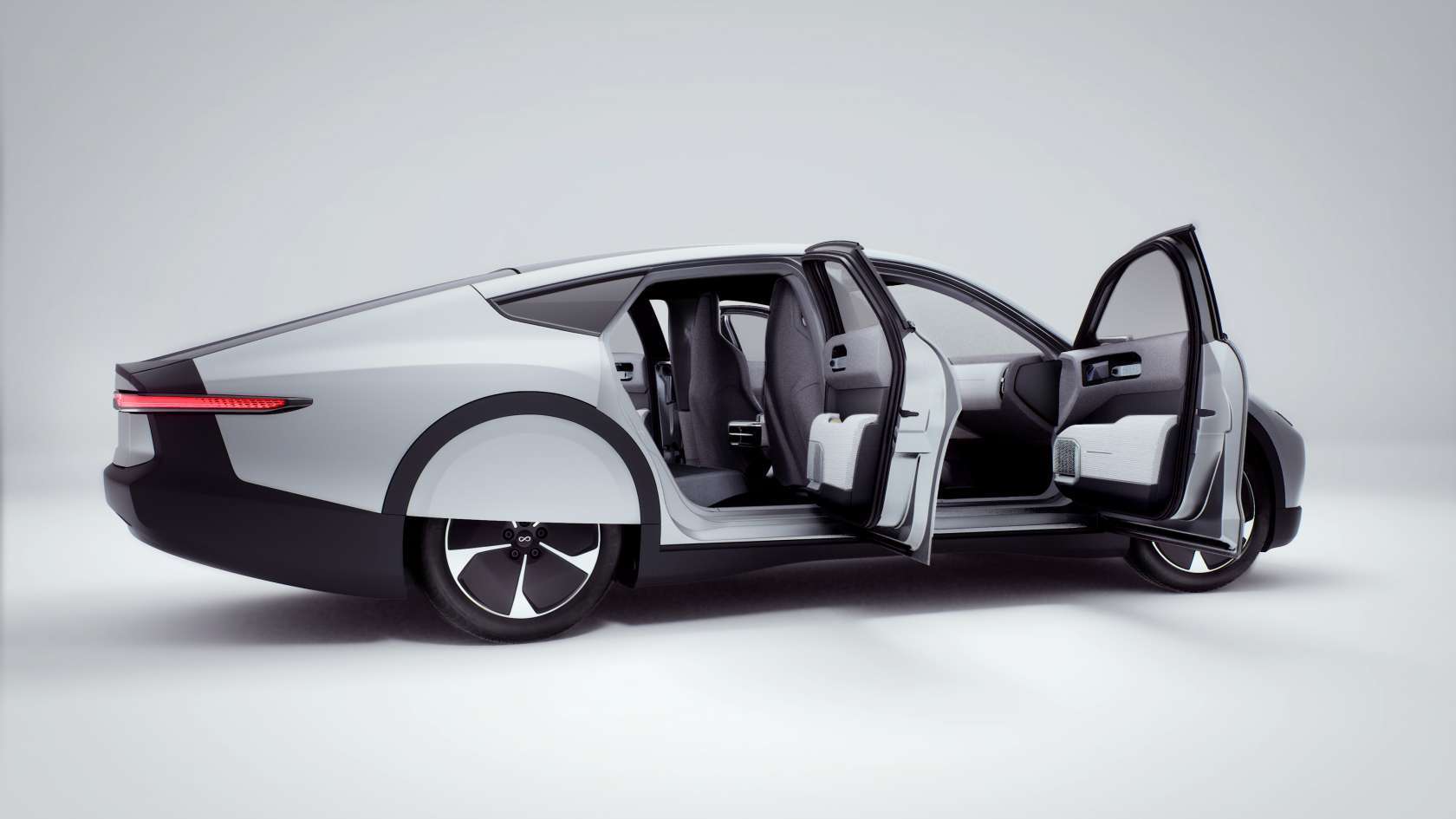
Yes, you read that right. The Lightyear One is equipped with four freaking electric motors, one in each wheel. If Tesla achieves ludicrous performance with two motors, then what more if the vehicle comes with four?
I’m sorry to burst your bubble, but the Lightyear One is not designed to grab the Tesla Model S by the horns. The company failed to disclose the power output or performance figures, but they say the Lightyear One sprints rather tepidly from 0 to 60 mph in around 10 seconds.

Then again, the Lightyear One is not engineered to be a performance monster, even though the styling is a mashup between the McLaren Speedtail and Honda Insight. The styling is polarizing at first, but the extremely aerodynamic shape helps the four electric motors in motivating the Lightyear One adequately. This also means having independent all-wheel-drive for steady traction and grip.
The Lightyear One is the brainchild of the geniuses behind Solar Team Eindhoven, which won the Bridgestone World Solar Challenge in 2013, 2015, and 2017.

